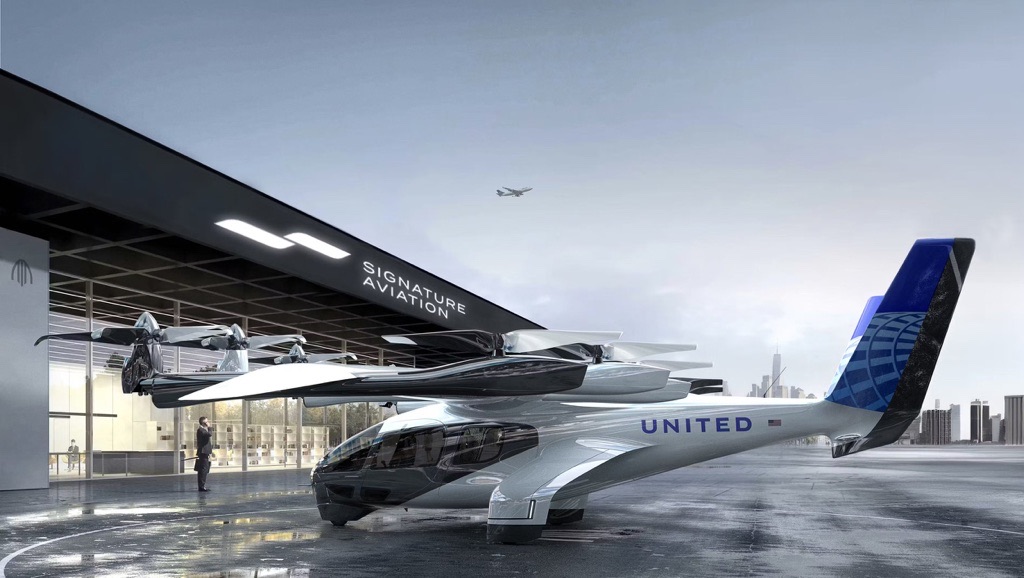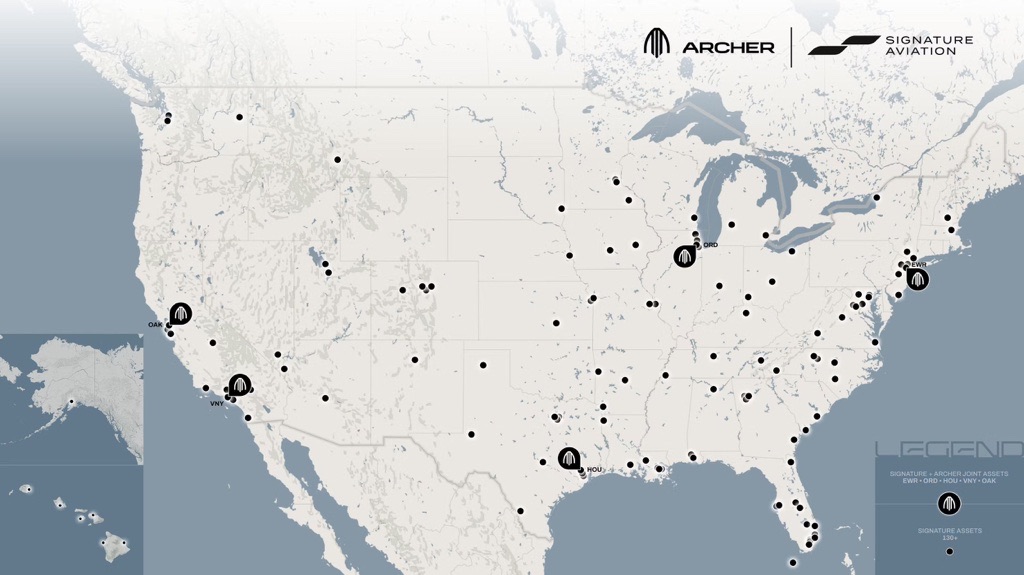
In the rapidly evolving world of electric transportation, one company is aiming to take the concept quite literally to new heights. Archer Aviation, a pioneering eVTOL (electric Vertical Takeoff and Landing) developer, is making significant strides in turning the dream of urban air mobility into reality. Let’s dive into the exciting developments and challenges facing this ambitious venture.
Reaching for the Stars: Archer’s Groundbreaking Partnership
Archer Aviation recently made headlines with a game-changing partnership that could revolutionize how we think about air travel. The company has joined forces with Signature Aviation, a major player in private airport terminal operations across the United States. This collaboration is nothing short of monumental, as it lays the groundwork for a future where air taxis are a common sight in our skies.
Why This Partnership Matters
- Infrastructure Development: The deal with Signature Aviation provides Archer with a ready-made network of takeoff and landing sites, crucial for any air taxi service.
- Strategic Planning: This move is akin to building a highway system before cars become widespread – ambitious, yet essential for long-term success.
- Market Readiness: By securing these locations, Archer is positioning itself at the forefront of the urban air mobility revolution.
The Midnight Aircraft: Archer’s Ace in the Sky
At the heart of Archer’s vision is their flagship aircraft, the Midnight. This cutting-edge eVTOL represents the culmination of years of research and development in electric aviation technology.
Key Milestones:
- FAA Certification: Archer has already secured this crucial approval, a significant step towards commercial operations.
- First Transition Flight: The Midnight recently accomplished its first successful transition from vertical to horizontal flight, a critical technical achievement.
Electrifying the Skies: Ambitious Timeline and Challenges
Archer isn’t just dreaming big; they’re setting ambitious timelines to match. The company aims to electrify the first airport terminals as early as 2025, a goal that’s both exciting and daunting.
Potential Hurdles:
- Charging Infrastructure: Scaling up from phone charging stations to powering entire fleets of air taxis is a massive undertaking.
- Regulatory Landscape: Navigating the complex web of aviation regulations for a new class of aircraft presents unique challenges.
- Public Acceptance: Overcoming concerns about safety, noise pollution, and privacy will be crucial for widespread adoption.
The Road (or Sky) Ahead: Navigating Challenges
While Archer’s progress is impressive, the path to widespread urban air mobility is not without its turbulence. Let’s explore some of the key challenges facing the industry:
Noise Pollution
- eVTOLs must operate quietly to be acceptable in urban environments.
- Innovative propeller designs and noise-canceling technologies are being explored.
Safety Concerns
- Rigorous testing and fail-safe systems are essential for public trust.
- Redundant propulsion systems and advanced autopilot technologies are being developed.
Regulatory Hurdles
- Working closely with aviation authorities to establish new guidelines for eVTOLs.
- Balancing innovation with stringent safety standards.

The Electric Aviation Ecosystem
Archer’s success doesn’t exist in a vacuum. The growth of urban air mobility relies on a complex ecosystem of technologies and services.
Key Components:
- Vertiports: Dedicated takeoff and landing facilities for eVTOLs.
- Air Traffic Management: Advanced systems to coordinate low-altitude urban flights.
- Battery Technology: Continued improvements in energy density and charging speeds.
- Pilot Training: New programs to prepare pilots for eVTOL operations.
Comparing eVTOLs to Traditional Transportation
To understand the potential impact of air taxis, let’s compare them to existing modes of transport:
| Aspect | eVTOL Air Taxi | Car | Helicopter |
|---|---|---|---|
| Speed | 150-200 mph | 30-70 mph (urban) | 160-180 mph |
| Range | 50-150 miles | 300-400 miles | 300-400 miles |
| Emissions | Zero (electric) | High (gas), Low/Zero (electric) | High |
| Noise | Low-Medium | Medium | High |
| Infrastructure Needs | Vertiports | Roads | Helipads |
The Future is Now: What’s Next for Archer and Urban Air Mobility?
As Archer continues to push the boundaries of what’s possible in electric aviation, the future of urban transportation looks increasingly skyward. Here are some potential developments we might see in the coming years:
- Autonomous eVTOLs: While initial models will be piloted, fully autonomous air taxis could become a reality.
- Expanded Route Networks: As vertiport infrastructure grows, we can see air taxi services connecting suburbs, cities, and even regions.
- Integration with Existing Transit: Seamless connections between air taxis and ground-based public transportation.
- Emergency Services: eVTOLs could revolutionize medical evacuation and disaster response.
Conclusion: A New Era of Urban Mobility
Archer Aviation’s bold vision and concrete steps towards urban air mobility represent more than just technological innovation – they signify a paradigm shift in how we conceive of transportation. While challenges remain, the potential benefits of eVTOLs in reducing congestion, cutting emissions, and transforming urban landscapes are too significant to ignore.
As we watch Archer and other pioneers in this field push the boundaries of what’s possible, one thing is clear: the future of transportation is looking up – quite literally.
We’d love to hear your thoughts! Have you ever imagined commuting by air taxi? What excites or concerns you about this technology? Share your perspective in the comments below!
